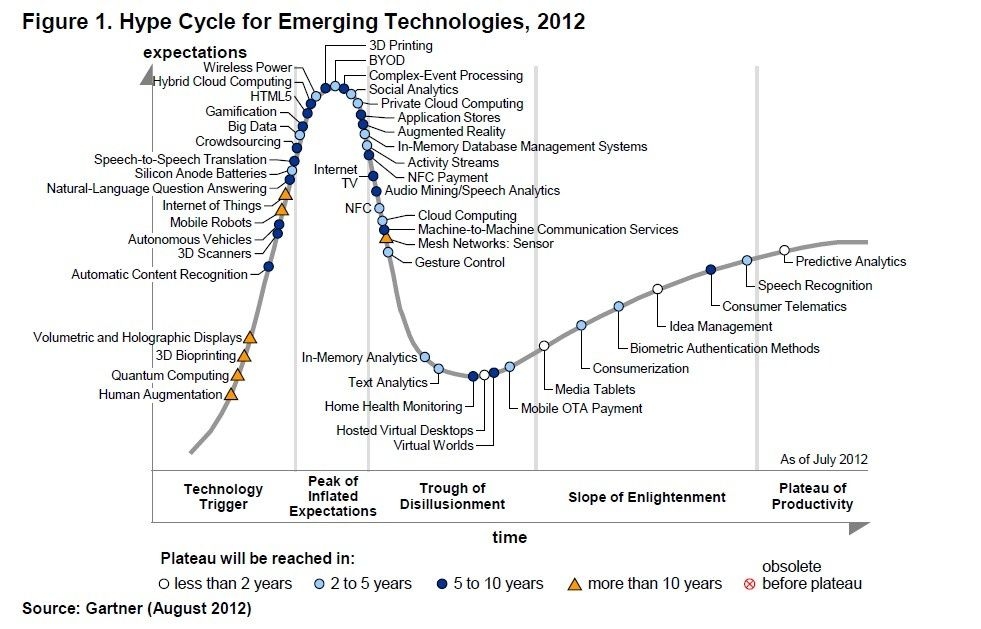Insufficient Data:
Hot Hype, or Just Hot?
The onslaught of e-mail about big data is one of the reasons I decided to write this series asking the question, “What is big data?” I was getting about one e-mail a day from the good people over at Aberdeen, inviting me to participate in surveys about big data. IBM sent me e-mails about white papers on how they study traffic patterns.
Just so I could take control of my mailbox, I deployed a simple tool to shunt any message that contained the term “big data” into a folder. In October, seventy-one messages arrived that contained the term “big data,” not including the ones from clients and colleagues asking me about the hype.
I got several messages from colleagues and clients who forwarded the same marketing spam, asking if this was a topic to pay attention to. One memorable message from a colleague stood out: "I'm reminded of the old Memorex ad, ‘Is it real, or is it Memorex?’ So, this big data, is it real, or is it just hot hype?"
That message reminded me of a chart I used a few years ago when a client asked me about speech recognition technology in the warehouse. The research and consulting firm, Gartner, produces an annual chart depicting the hype cycle for emerging technologies. The research goes back to the mid-1990s, but it really started to attract notice about ten years ago. I don’t consider it to be a scientific analysis, but it is a great tool for understanding technology trends.

As with any report, I look at this data with the desired outcome of the questions that it will cause me to ask. Great reports don’t give you answers; great reports make you ask great questions. The questions that I ask when I look at the Hype Curve focus on the relationships between the different technologies—what are the apparent relationships? What other technology could hold another back?
I always liked the definitions used for the phases of time, "the peak of inflated expectations," and "the trough of disillusionment." When I first started looking at these charts, I assumed that the technology would eventually move along the curve, eventually reaching the plateau of productivity. The truth is that some never make it; they become obsolete before they reach plateau, passed by other technology that solves the problem better. Looking from year to year, some fall off the chart. I imagine them falling along the steep downward slope of disillusionment, building to a terminal velocity, unable to pull out of the dive, crashing into the bottom of the chart like an airplane crash from an old movie.
Looking at the August 2012 chart, we can see that Big Data is still on the rise, just crossing into the zone of inflated expectations. It's crowded up there at the top of that first peak. That crowd doesn't mean that big data is not going to pass quickly into the trough of disillusionment. The light blue color indicates that Gartner believes that big data will be on the right-hand side of the chart in less than five years. I’m not so sure.
When my clients ask about big data, I don’t tell them that it's all hype. I say that there is a lot of hype, and that there is sure to be more, and the truth will come out in time. I then ask them a few questions to get them focused on what is important to the business.
“What are the three things that you can do today with your IT systems that guarantee your investment will add 20 percent to your revenue?”
“What three things can you do with your IT systems today that will reduce your expenses by 20 percent net of the expense of the IT improvement?”
In every case, the answer is not big data. It is real data. Not a lack of real data, but what to do with the data they have.
My clients want to know if they should pay attention to big data. Those two questions help them find the answer themselves. There are far better things to focus on today that will help the company make more money today and tomorrow.
There is no doubt in my mind that the technology of big data has applications in today's world. Applied to drug research, simulation, and perhaps elections, big data has relevance today. We should watch what happens, and see how the companies that jumped onto the bleeding knife edge of this technology curve use the tool and benefit from the tool. Watch, but not stare.
What most of us should do is stare at the reality of our current systems, and see where the real money is in our supply chain.


